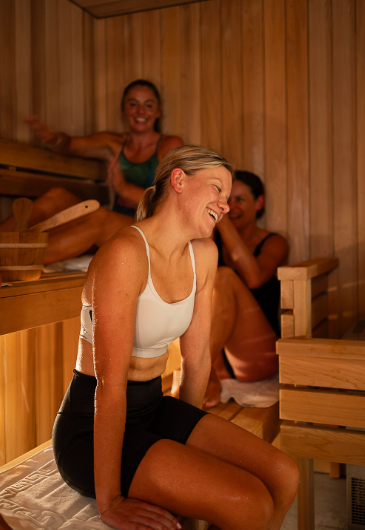
Workout Recovery: Saunas vs Ice Baths – Which is Better?
Have you ever dreaded an ice bath but forced yourself to endure it in the name of recovery? Or maybe you’ve thought about trying it but are hesitant to plunge into water so cold it feels like the North Pole?
In this post, we’ll explore the ongoing debate around cold versus heat therapy for workout recovery. Both methods have their own research-backed benefits, and your personal preferences could play a significant role in which option you choose.
Cold and heat therapies have both gained popularity in recent years, especially among athletes looking to recover more quickly from intense training. But the timing and application of these therapies can impact their effectiveness. So let’s break down the research and explore how these methods compare.
Cold Water Immersion (Ice Baths)
Cold water immersion, or ice baths, are a popular method for reducing muscle soreness and inflammation after intense workouts. The idea is that the cold temperature helps constrict blood vessels, reduce swelling, and flush out metabolic waste products. While this can be effective in minimizing immediate soreness, some research suggests that cold therapy right after training might hinder long-term muscle adaptation.
Robb Wolf, a health expert, points out that while ice baths can be beneficial for high-level athletes who need to recover quickly between sessions, they may interfere with the adaptation process that comes from the workout itself. The goal of training isn’t just to push your body, but to allow it to adapt and grow stronger. Cold immersion, if done too soon after a workout, could potentially blunt this adaptive response, much like nonsteroidal anti-inflammatory drugs (NSAIDs) might.
Heat Therapy (Saunas)
On the flip side, heat therapy has its own benefits. Saunas, for example, promote sweating and increase circulation, helping to relax muscles and reduce stiffness. Heat also stimulates the production of heat shock proteins, which are involved in muscle repair and recovery. Unlike cold therapy, heat exposure seems to align more directly with the body’s natural recovery processes after physical exertion.
Robb shares that, from his perspective, he feels better after a sauna or hot immersion, particularly following strenuous activities like weight training or Brazilian jiu-jitsu. Heat exposure may not only aid in muscle relaxation but also enhance the recovery process by supporting cellular repair mechanisms, which are activated by heat shock proteins.
When to Use Cold vs Heat Therapy
The timing of each recovery method plays a crucial role in its effectiveness. Robb suggests that if you do choose cold immersion, it’s best to do it hours before your workout, rather than immediately after. This is because the adaptation process—the muscle building and recovery—happens in the period following exercise, and cold water can impede that process.
On the other hand, heat therapy, such as saunas, can be used post-workout without negatively affecting muscle adaptation. In fact, it may even support the process by encouraging circulation and reducing muscle tightness.
Personal Preference Matters
Ultimately, the choice between cold and heat therapy often comes down to personal preference. Robb admits that while he understands the benefits of both methods, he prefers heat exposure due to his own discomfort with ice baths. This is a reminder that recovery strategies should align with what feels best for you, as long as they are based on the scientific evidence supporting their effectiveness.
Conclusion
Both ice baths and saunas have their place in the world of workout recovery. Cold immersion may be helpful for reducing immediate soreness and inflammation, but it’s essential to use it strategically and not too close to training. Heat therapy, on the other hand, can support muscle relaxation and enhance recovery processes post-workout. Whether you prefer one over the other or choose to incorporate both, the key is to listen to your body and select the method that works best for you.




